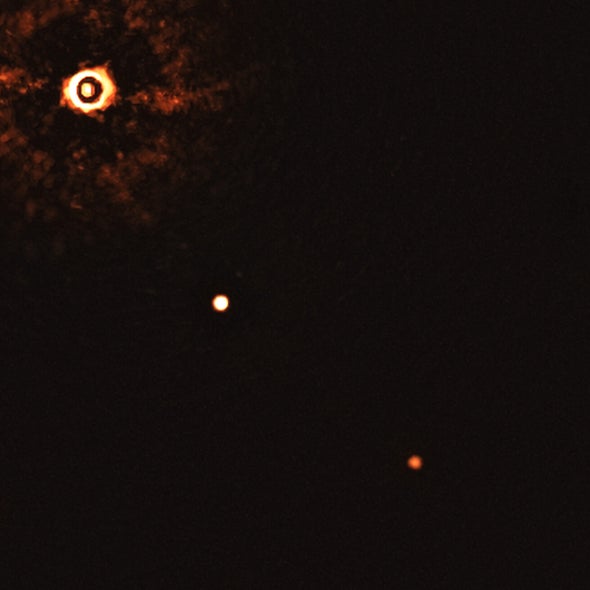by KAREN KWON

For the first time ever, scientists have managed to capture images of multiple planets twirling about another sunlike star. Yet despite its stellar host’s resemblance to our own, the snapshots of this planetary system reveal it to be no place like home.
Named TYC 8998-760-1 and located about 300 light-years from Earth in the constellation Musca, the star is similar in mass to the sun. Its two known planets, however, are distinctly alien—orbiting their star at about 160 and 320 times the Earth-sun distance, respectively (spans that are about four and eight times greater than Pluto’s separation from our sun). Both worlds are supersized, compared with anything in our solar system. The outermost planet is some six times heavier than Jupiter, and the inner one tips the scales at 14 times Jupiter’s mass. Each of the worlds appears as a small dot around the star in images produced by the Spectro-Polarimetric High-contrast Exoplanet Research instrument, or SPHERE, which operates on the European Southern Observatory’s Very Large Telescope in northern Chile. The findings are detailed in a study published on July 22 in the Astrophysical Journal Letters.
“The really fascinating thing about this work is that [it] continues to add to the vast diversity of what systems and planets are out there, orbiting all sorts of stars,” says Rebecca Oppenheimer, an astrophysicist at the American Museum of Natural History in New York City, who was not involved with the study. “There is no single ‘architecture’ for a planetary system.”
Scientific American for more